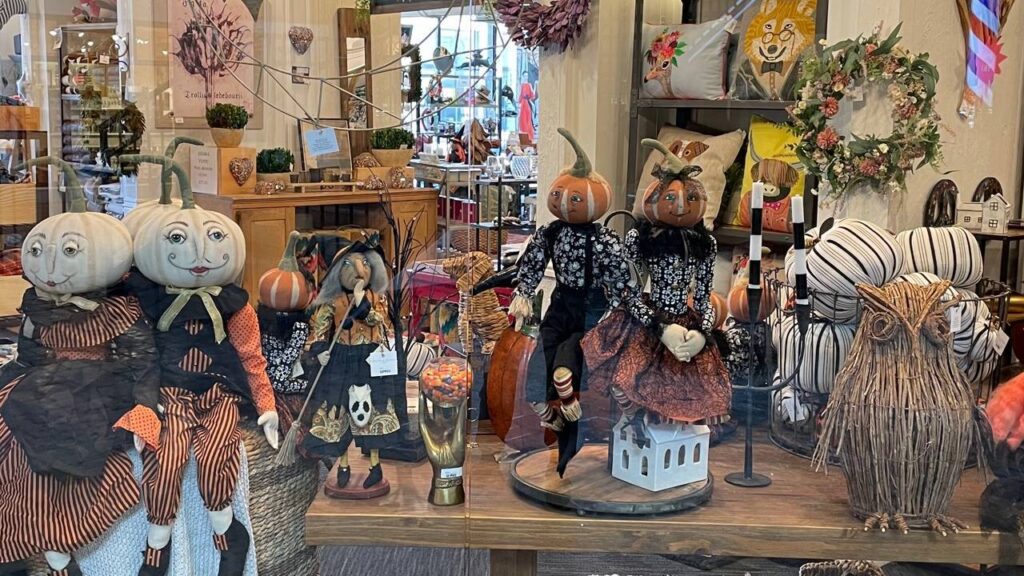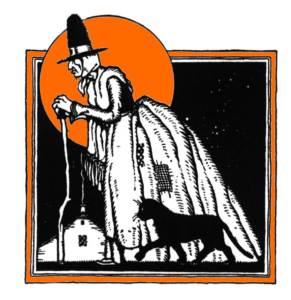Consumers weren’t surprised when Halloween displays started showing up in stores this past July. After all, Halloween is big business. Despite inflation and economic uncertainty, the National Retail Federation (NRF) predicts consumers will spend a record-breaking 12.2 billion dollars celebrating Halloween this year. Journalist Nate Delesline III reports, “Prosper Insights & Analytics surveyed about 8,000 people and found that 73% of them said they plan to participate in Halloween-related activities this year. That’s up from 69% in 2022.”[1]
Decorations, Candy, and Costumes
Dressing up in costumes and trick-or-treating for candy have been a mainstays of Halloween celebrations for decades. Elaborate home decorations are a relative newcomer on the scene. Surprisingly, however, spending on decorations now exceeds spending on candy and costumes. Delesline reports that the NRF has broken down the $12.2 billion total into various Halloween categories. Heading into this year’s Halloween celebration, he notes the NRF is predicting, “Total spending of $3.9 billion on Halloween decorations [which] is expected to surpass the projected $3.6 billion consumers will spend on candy this year. Spending on candy is up from $3.1 billion last year. Spending on adult costumes will reach $2 billion, while spending on children’s costumes is anticipated to hit $1.4 billion.”
Journalist Caroline Jansen observes, “Halloween decorations have increasingly grown in popularity over the years and it’s become a lucrative opportunity for retailers.”[2] She adds, “Halloween wasn’t always a holiday where consumers shelled out a lot for decorations and other items.” She traces the origins of Halloween decorations back to the early 1900s, when “Halloween was a holiday geared toward adults hosting parties … and add decorations to their homes. The decorations, which featured scary imagery, were inexpensive and consumers would often throw them away after the parties ended.”
As time went on, Jansen reports that the focus of Halloween turned from adults to children. She explains, “In the mid-’30s Halloween slowly started to change in the U.S. and was accelerated even further after World War II ended. The holiday shifted from being adult-focused to being catered to kids, by parents hosting children’s Halloween parties and schools offering events around the day. As a result, decorations began to change, depicting friendlier imagery versus scary. This shift was further propelled by pop culture with the introduction of ‘Wendy the Good Little Witch’ and ‘Casper the Friendly Ghost’ by Harvey Comics.”
Jump ahead another two decades and, Jansen reports, “Decorating for the holiday slowly became more mainstream. In 1958, First Lady Mamie Eisenhower decorated the White House for Halloween for the first time, featuring skeletons, jack-o-lanterns, dried corn and pumpkins. Still, the widespread extravagant displays on the outside of homes were years away.” According to Jansen, from the 1960s into the 1980s many homeowners didn’t decorate for Halloween. When homes were decorated, their themes became darker and scarier thanks to movies like “Halloween,” “Friday the 13th,” and “A Nightmare on Elm Street.” Jansen reports that retailers took notice, and, thanks to big-box retailers, more home decorating options became available to consumers. That’s one reason home decorations now score more sales than either candy or costumes.
Nevertheless, Halloween wouldn’t be such a popular holiday without candy. Journalist John Hitch observes, “Maybe as kid, you made trick-or-treating a game to get the biggest bag, but highest quality as well. You made it your business to know where the houses stocking the best candy were, i.e., the full-size Snickers, and where to skip, like the sugar buzzkilling dentist’s house who would hand out miniature toothbrushes (I had two of these nut jobs on my street growing up).”[3] Hitch goes on to observe that it takes a good supply chain to get that candy into a child’s bag on Halloween. In his article, he provides a list of candy companies that make and distribute the candy kids love.
According to journalist Sabri Ben-Achour, “Halloween [is] the holiday that haunts supply chains.”[4] Why? Because preparations for Halloween begin months, even years, before goods are stocked on store shelves. Ben-Achour cites Julie Niederhoff, an associate professor at Syracuse University’s Whitman School of Management, who notes, “Businesses that sell Halloween costumes, candy or decor have to make decisions 18 months to two years in advance. … Best-case scenario, it has to be six to eight months in advance.” Ben-Achour adds, “The problem is that Halloween is driven by trends — you don’t always know what people are going to want to dress up as that far in advance.” This raises numerous questions, he notes, “What costumes and decorations and candy to make or procure, how much of them, what raw materials you might need, how and when to ship them over?”
To underscore how important following trends can be, Niederhoff points to Halloween 2021. She told Ben-Achour, “Everybody wanted ‘Squid Game’ costumes and ‘Squid Game’ designs, but that was not on anyone’s production planning six months earlier. So, there was a really big mismatch between what consumers were looking for and what was available, and the supply chain just couldn’t work fast enough.”
Concluding Thoughts
According to NRF President and CEO Matthew Shay, “More Americans than ever will be reaching into their wallets and spending a record amount of money to celebrate Halloween this year.”[5] Whether you are hosting or attending a Halloween party, decorating your yard with witches and ghosts, or simply opening your doors to trick-or-treaters, please have a safe and happy Halloween celebration.
Footnotes
[1] Nate Delesline III, “Halloween spending to reach $12.2B this year: NRF,” Retail Dive, 21 September 2023.
[2] Caroline Jansen, “How Halloween became a $10B business for retailers,” Retail Dive, 24 October 2022.
[3] John Hitch, “Home, Sweet Home: Where are America’s Best Candy Factories?” IndustryWeek, 29 October 2018.
[4] Sabri Ben-Achour, “The scariest part of Halloween: supply chains,” Marketplace, 2 October 2023.
[5] Delesline, op. cit.





